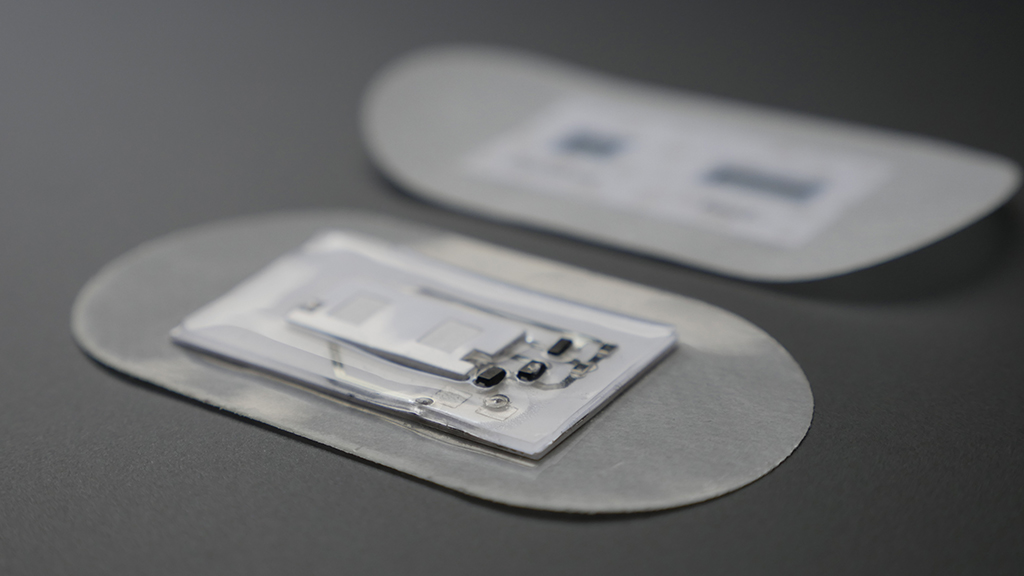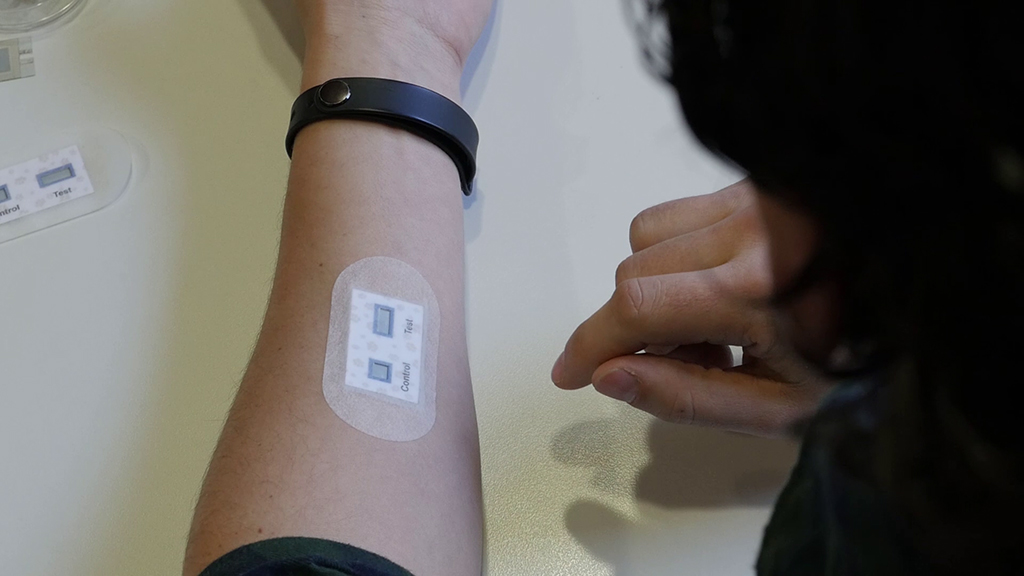Sabate’s team has developed the Power-Patch, a self-powered skin patch for the measurement of sweat conductivity that can potentially be used as a screening device of Cystic Fibrosis disease. The key component of the patch consists of a paper battery that is activated upon adding the sweat. The fluid acts as an electrolyte, and for a particular configuration of the battery materials and design, the battery output is fully dependent on the conductivity of the liquid sample that is poured in its paper core. This approach enables the sensor and battery to be merged in a single element—a battery sensor—whose generated power is directly related to the conductivity of the sample to be analysed.
The battery has been integrated into a patch and tested with artificial sweat samples mimicking healthy and non-healthy conditions of CF patients. The patch is conceived to be applied on the forearm of the patient and yield a “positive” result in case of an abnormal conductivity level of sweat is detected. The patch remains quiescent until sufficient sweat is absorbed by its paper-based electroactive core, which is in contact with the skin. After sweat absorption, the battery generates electrical power that is managed with a minimalistic electronic circuit that discerns between a healthy and a non-healthy condition. After providing a result, the patch can be disposed of with little environmental impact.
The patch will enable an easy screening of the CF condition in regional hospitals or clinics, providing a powerful yet affordable tool for early identification of patients in developing countries. The innovation potential of the skin patch was acknowledged by the Organic Electronics Association, who awarded the prototype for the best prototype/new product at the annual contest that took place at the European Large-area, Organic and Printed Electronics Convention in 2018. After a successful lab validation, the patch will undergo a feasibility test with patients in 2020 with the Cystic Fibrosis Unit from Hospital Sant Joan de Deu (Barcelona) within the frame of an ERC Proof-of-Concept grant.
Reference

